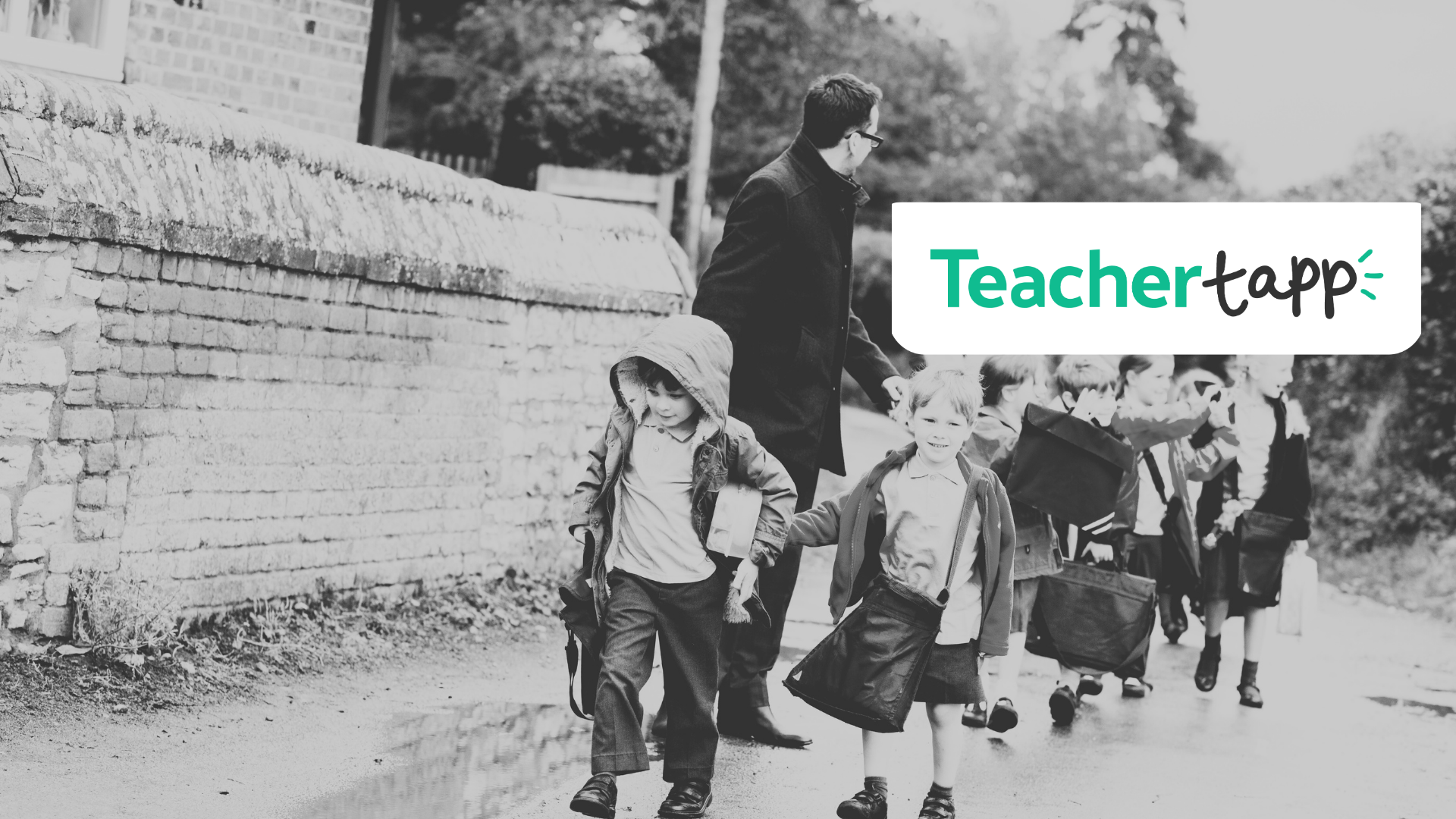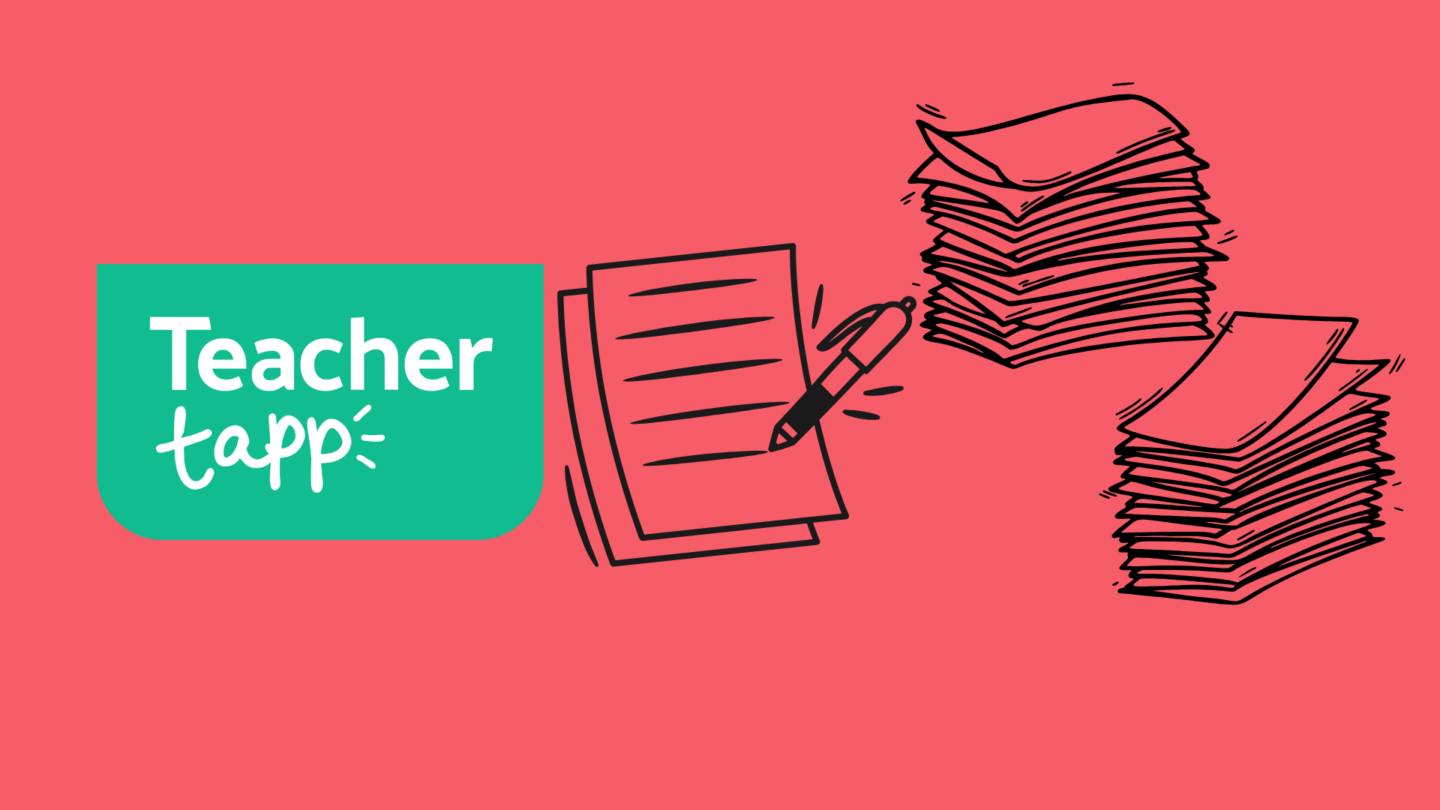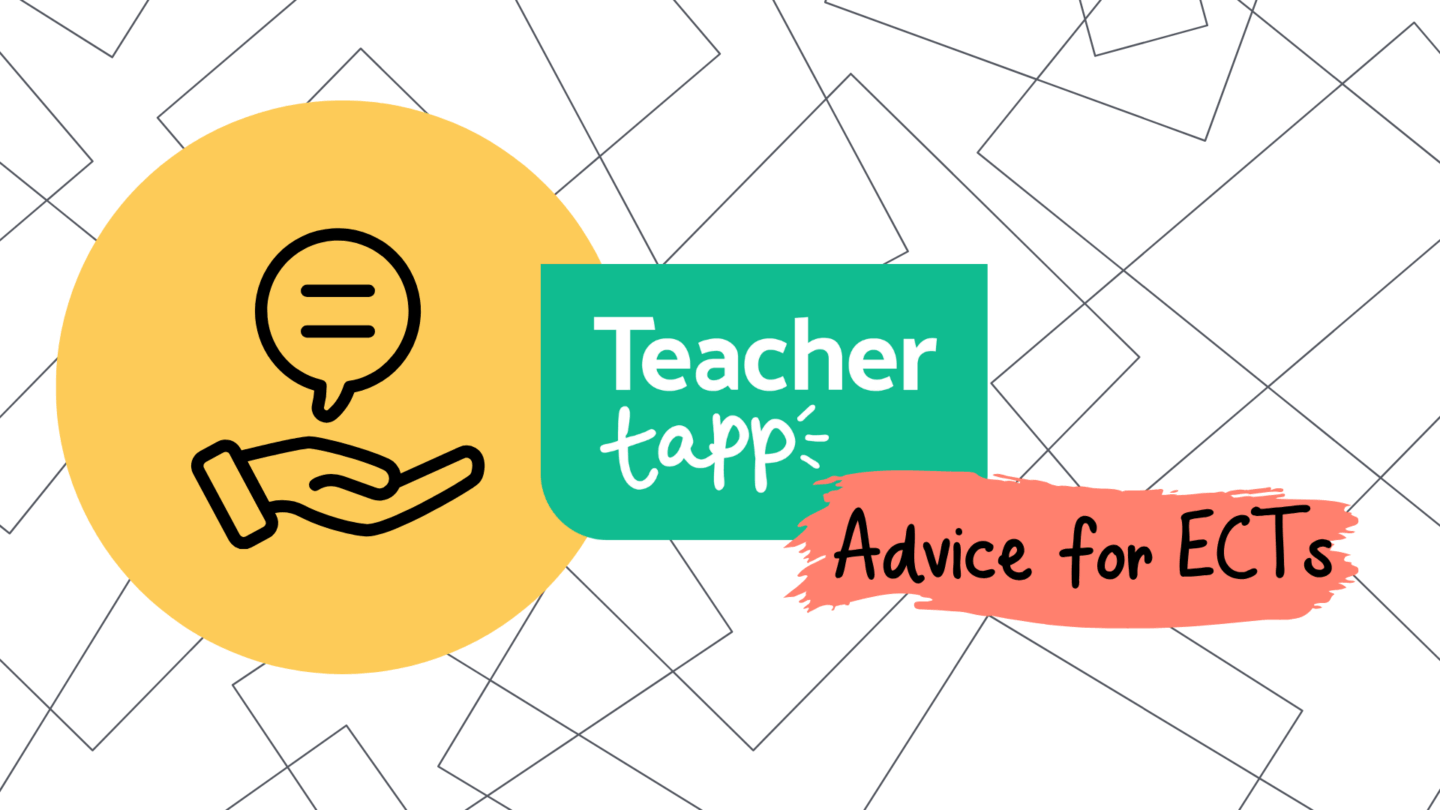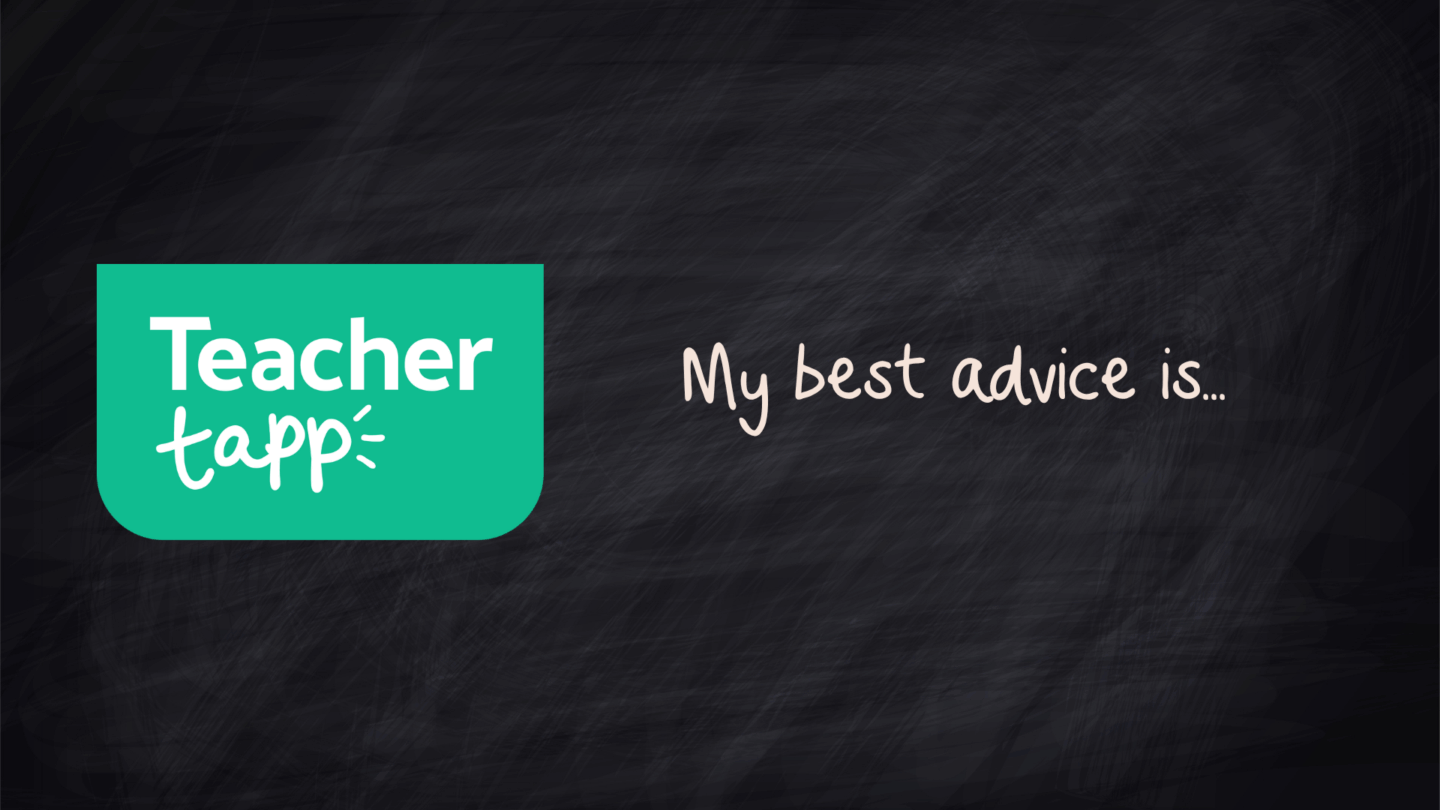Greetings, Tappsters!
The winner of the February prize draw has been announced! Congratulations to the secondary maths teacher in the North of England who won this month’s prize. Check the vouchers in your app to find out if you have been lucky!
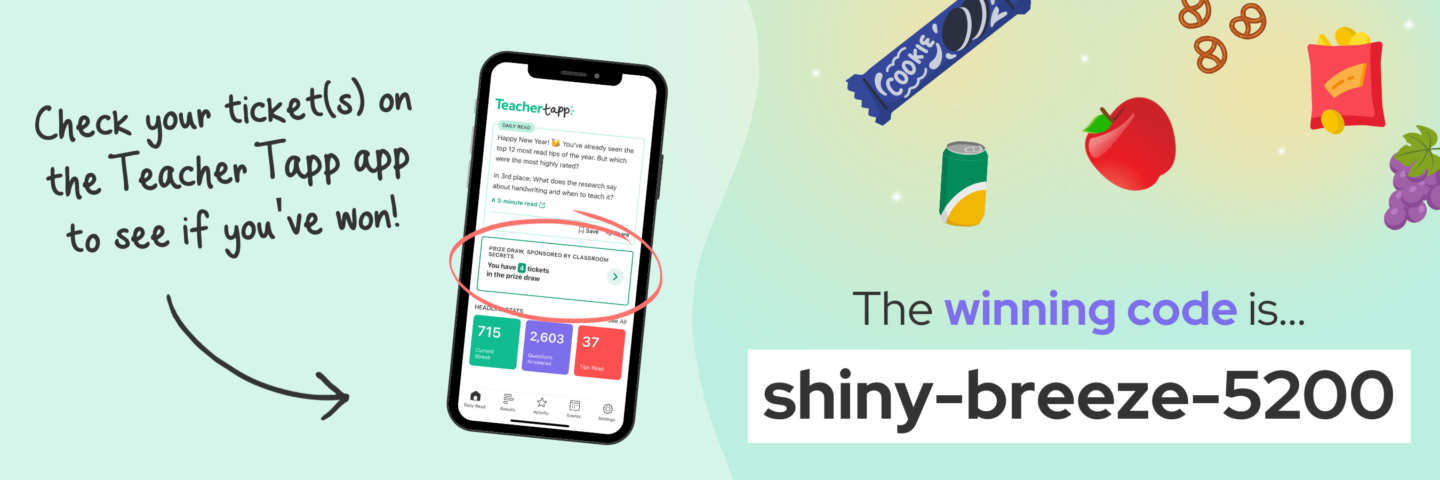
Now, let’s find out what you have told us this week…
Engaged parents
Primary schools rely on parental engagement to support their learners: younger learners are far more reliant on their parents and carers not just to take them to school, but to provide them with the resources they need to succeed in the classroom.
But just how many teachers find their parents are engaged and active with the school and their child’s learning?
The answer varies depending on the makeup of your school. In more affluent areas, teachers are far more likely to report the highest level of engagement (11% vs 0%). As would be expected, in fee-paying schools, 43% of teachers rated parental engagement at the highest level.
At the other end of the scale in both fee-paying schools and the most affluent state schools, just 1% reported that parents are ‘not at all’ engaged. Compare this to schools in the most deprived areas and it shoots up to 7%.
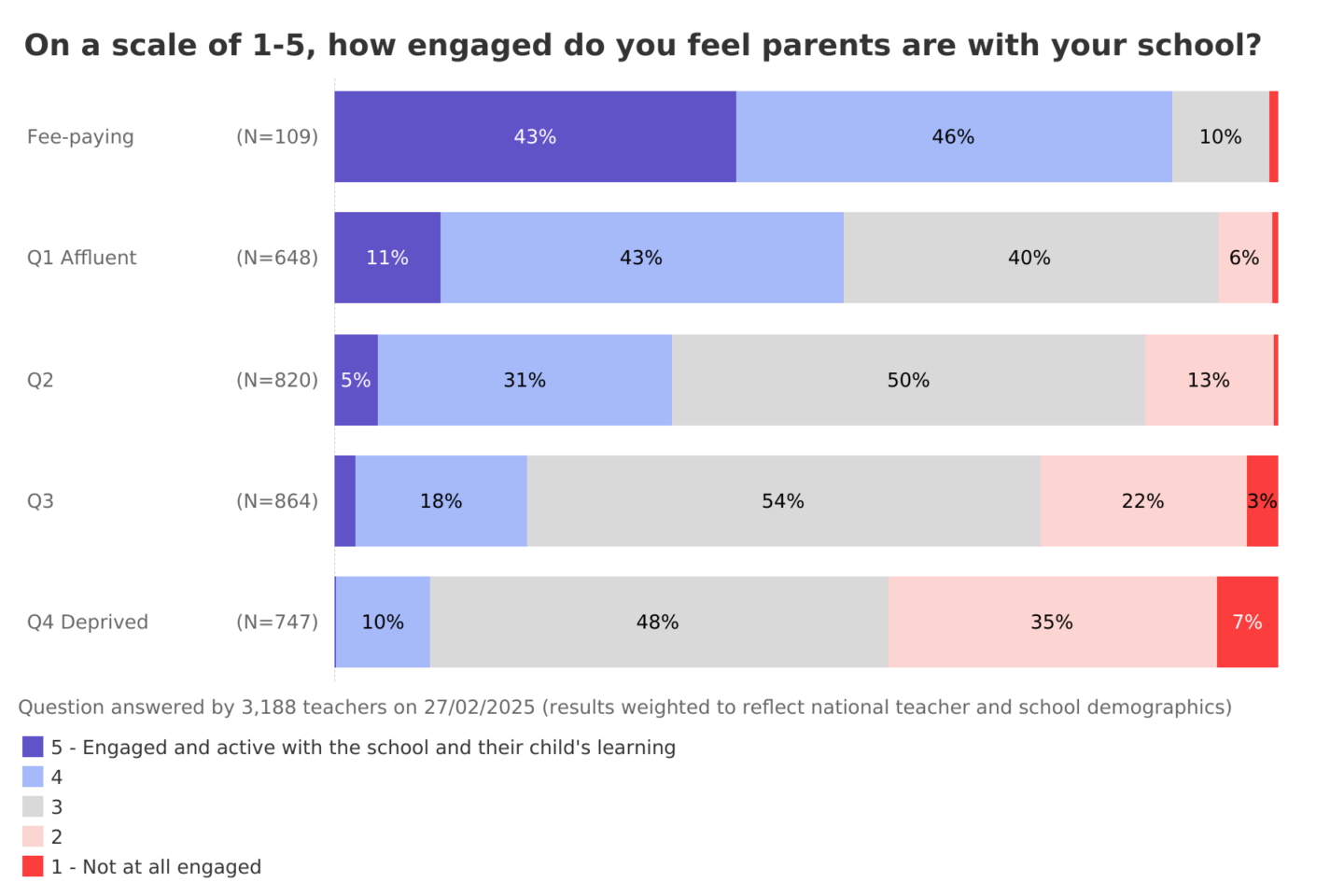
So is this a situation that is getting worse? The good (ish?) news is that these levels are quite similar to when we asked in 2023, with very little shift across the numbers. So although things aren’t getting better – by this measurement they’re not getting drastically worse.
Top concerns in primary
Despite these challenges with unengaged parents, home-school relationships aren’t even the biggest problem facing primary schools at the moment.
The top worry is funding (65% – same as when we asked in 2023), with pupil SEMH needs closely behind (61%, a jump UP of six percentage points since 2023).
In a shift from 2023, behaviour is now a bigger concern than workload, with 48% of teachers selecting it as a top issue (up from 36%).
Moving in the other direction, workload is a problem for 43%, down from 57% in 2023.
Parent engagement was a top issue for just under a third of teachers (30%).
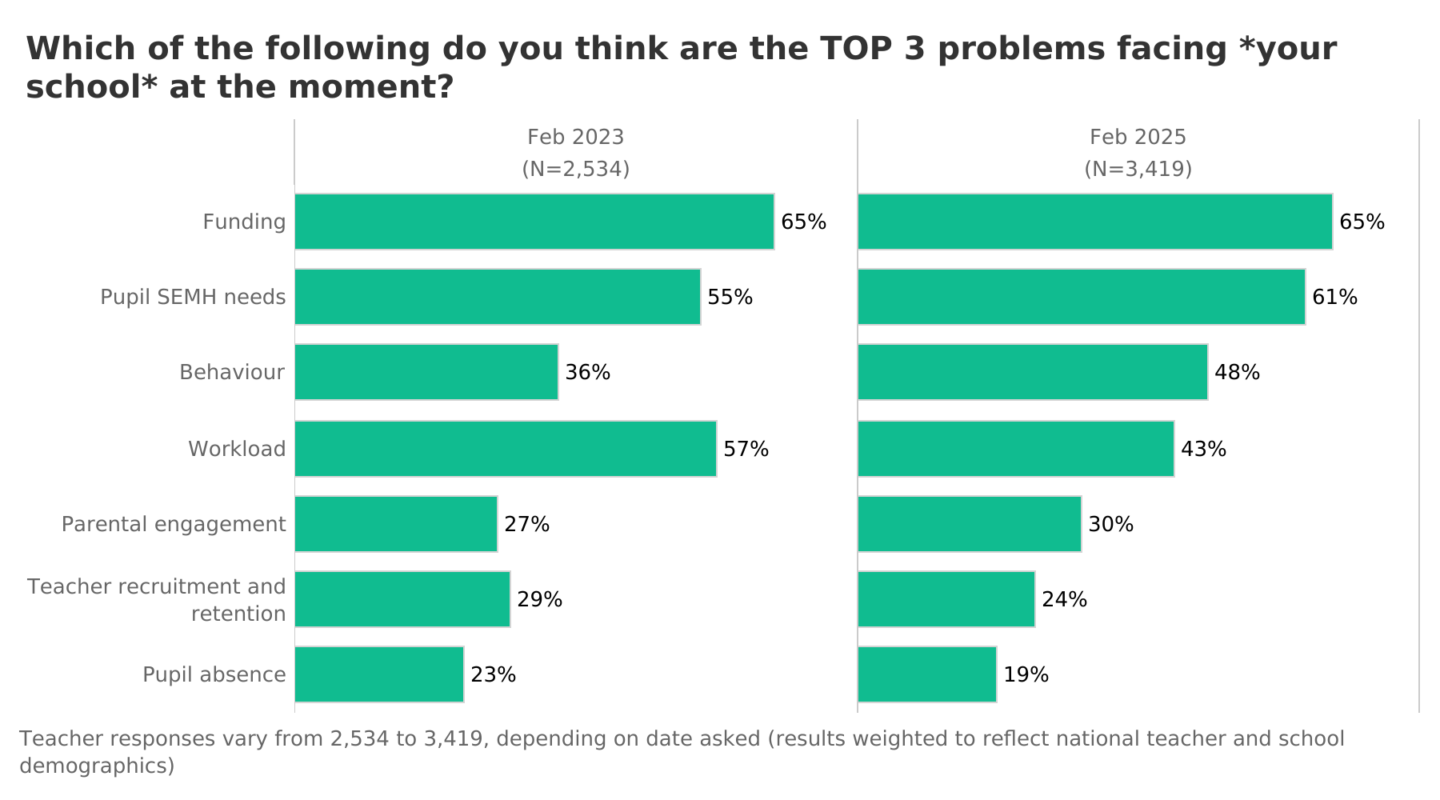
Is there still a supply teacher shortage?
As if the challenges above weren’t enough, school leaders also face the ongoing struggle of ensuring classes are covered when teachers are absent.
Back in 2022, more than half of school leaders reported serious difficulties finding supply staff.
Last month, Teacher Tapp found that teacher absence levels have stayed largely the same as in previous years (read more here). But if absence hasn’t changed, is finding supply cover still as much of a headache?
Good news – not really! This year, only 16% of leaders reported major problems securing supply staff, a big drop from 2022.
And it’s not simply because schools need fewer supply teachers—the number of leaders saying they don’t need extra cover has barely changed (10% in 2022 vs 12% in 2025). This suggests the real difference is better availability of supply teachers.
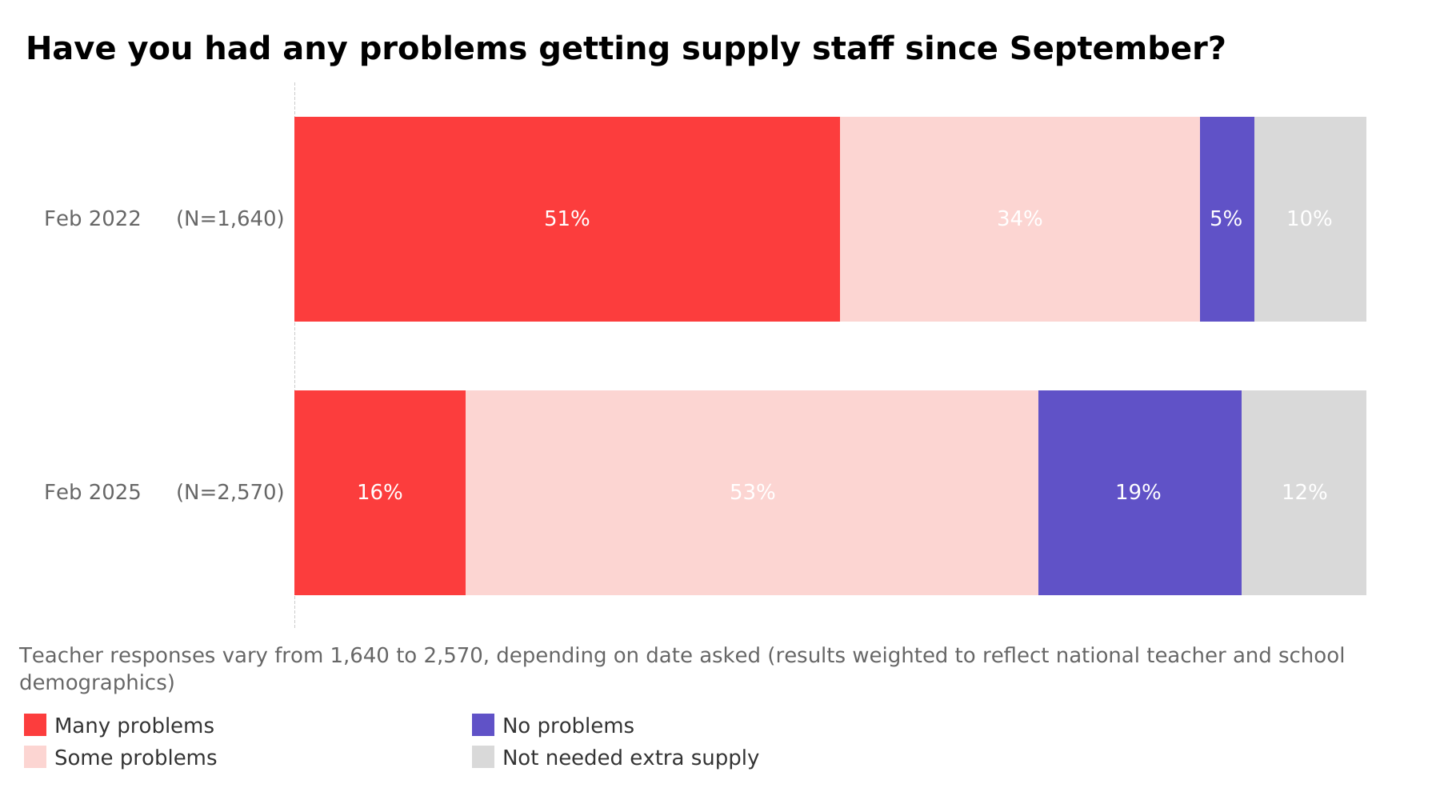
No IT crowd?
Shifting from teacher shortages to subject shortages – how many schools offer discrete computing classes as part of their curriculum??
Just 6% of schools provide compulsory computing lessons for both years of KS4, a figure that has barely changed since 2023 – despite computing being a core National Curriculum subject.
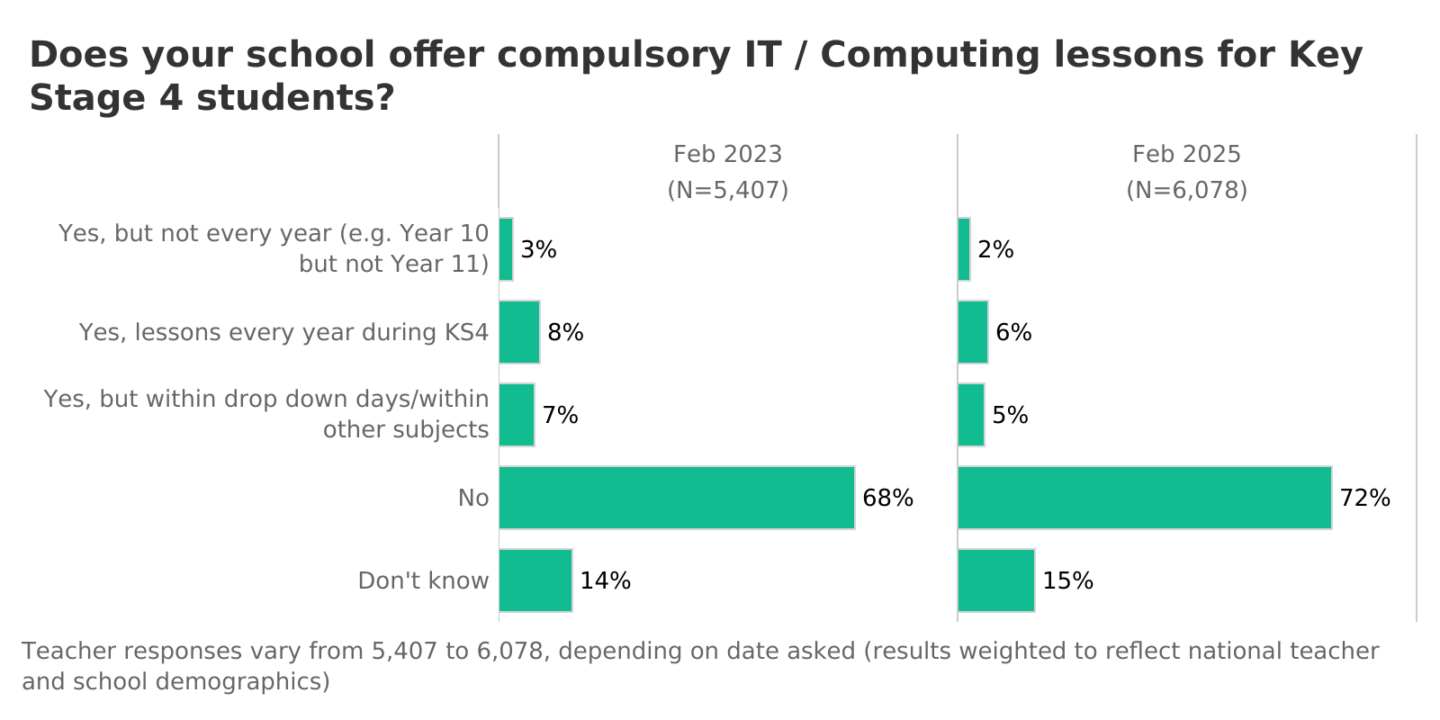
Later this year, Teacher Tapp will be repeating its report on teacher recruitment. Last year, computing was flagged as a key area where teacher recruitment is a challenge (possibly explaining the results above). Will the same subjects be flagged again this year? Look out for questions in the app about what recruitment has been like for your school this year…
Cut my workload! I want to do less of…
Teachers in both primary and secondary schools agree — marking is the top task they’d like to reduce. Many would prefer to share the responsibility with colleagues or even eliminate it (22% primary, 27% secondary).
The next most popular was behaviour management (20% primary and 24% secondary), followed by data admin tasks (21% primary and 17% secondary).
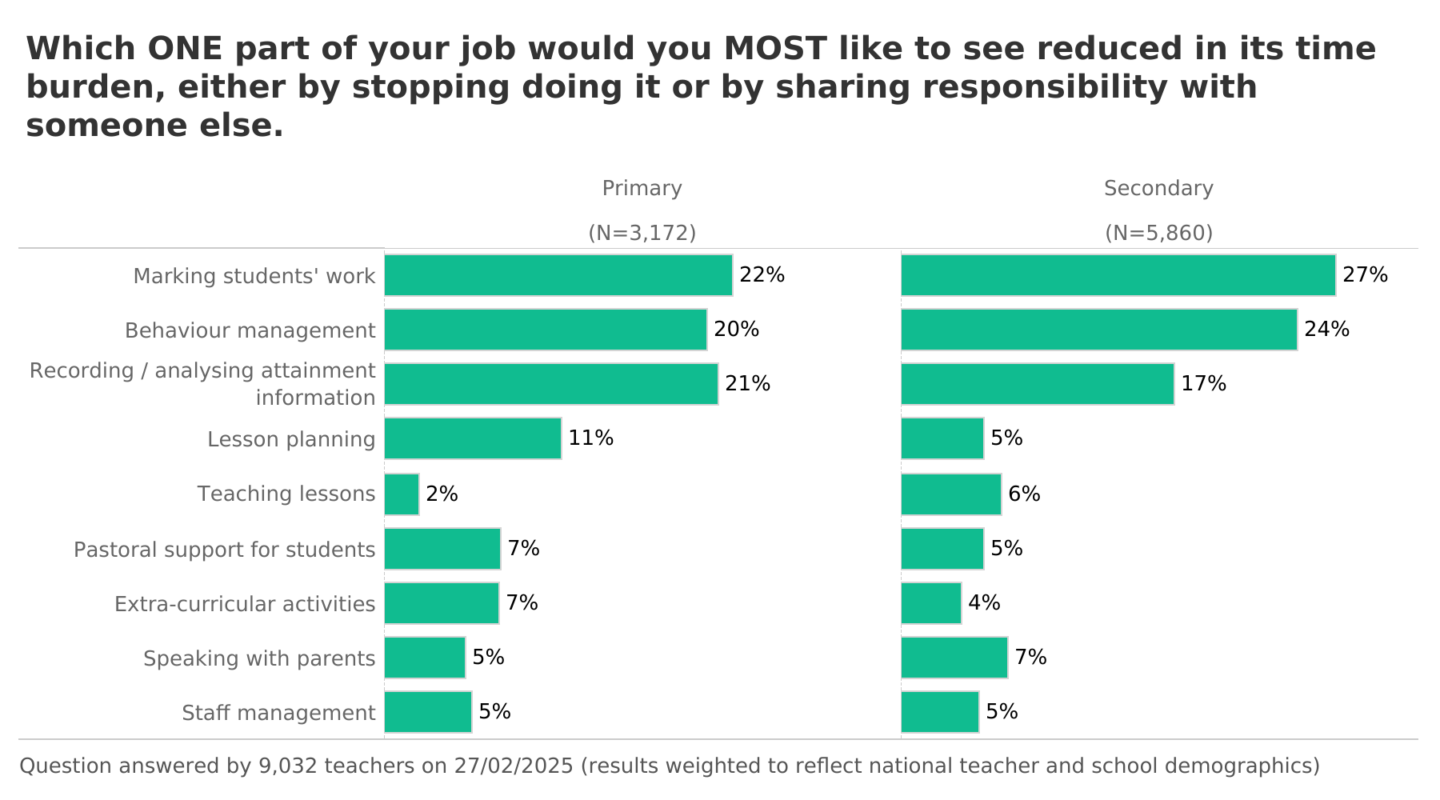
Paper vs Electronic vs Audio 📕🥊🖥️
Anyone who loves a good book is spoilt for choice in how to read that book. But despite the rise in e-books and audiobooks, the paper book reigns as the King of reading choices! 👑
Paper books remain the top reading choice for teachers (64%), regardless of age.
E-books are more popular with older teachers compared to younger teachers (24% vs 17%), but audiobooks are broadly similar in popularity across the age ranges.
Younger teachers are twice as likely as older teachers to say they don’t enjoy reading (8% vs 4%).
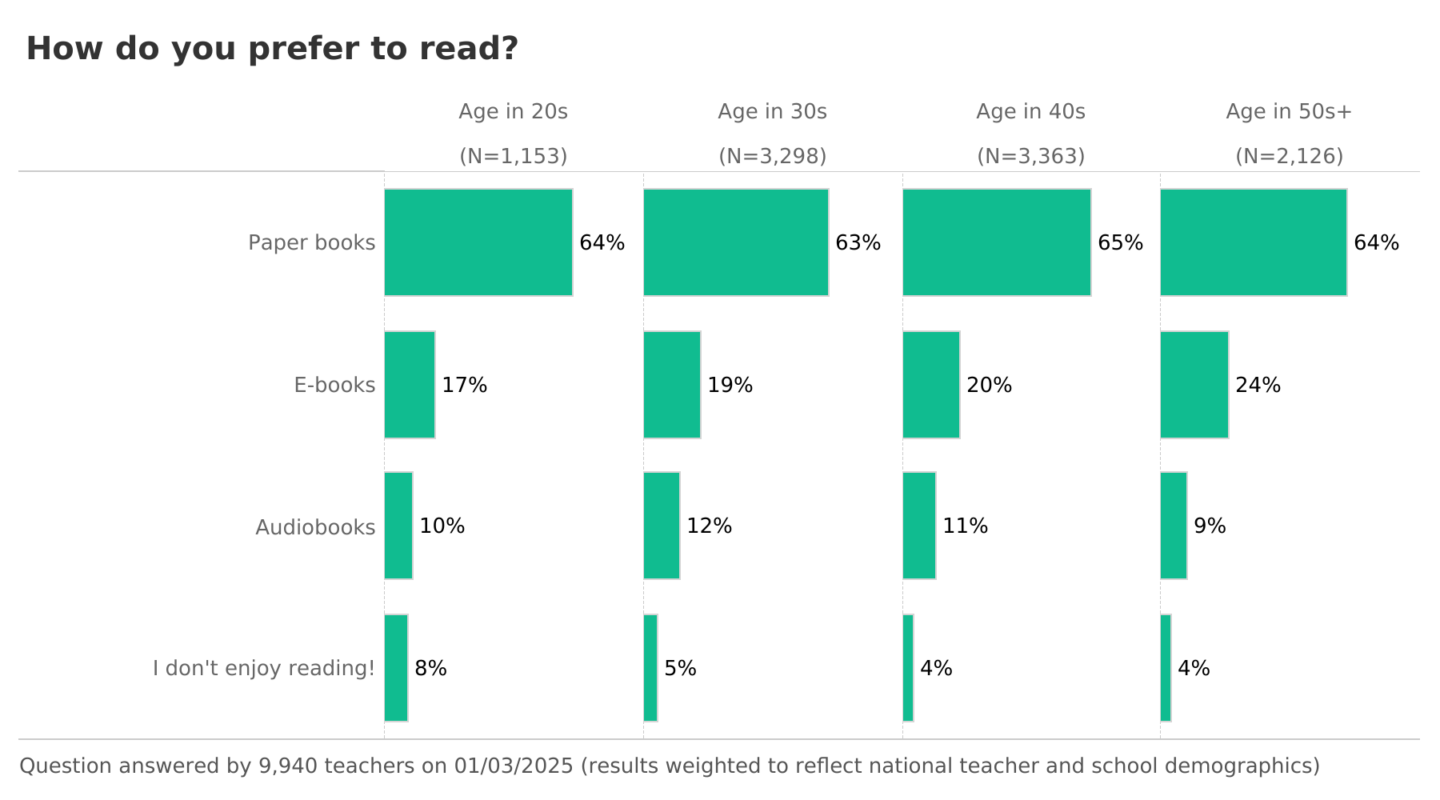
Daily Reads
This week our most-read piece was a piece for primary teachers about using task lists to cut workload.
Have you seen a great blog you think would make a great daily read? Let us know by emailing england@teachertapp.co.uk and we will check it out!


